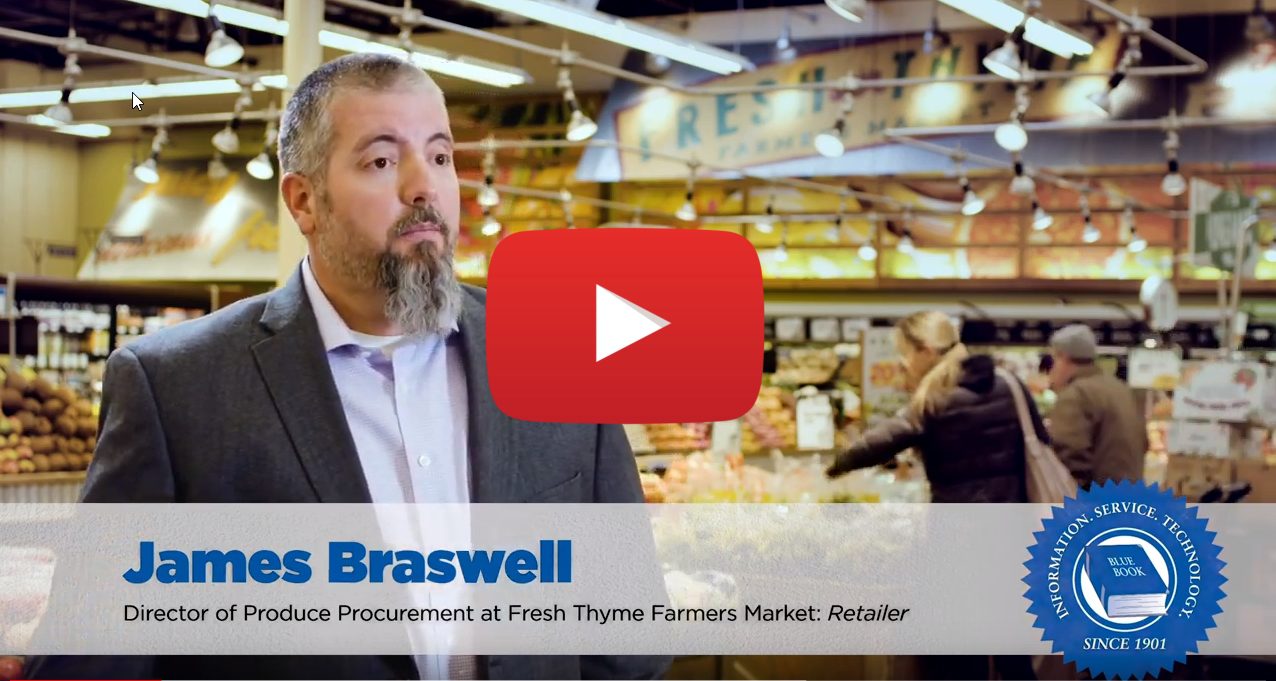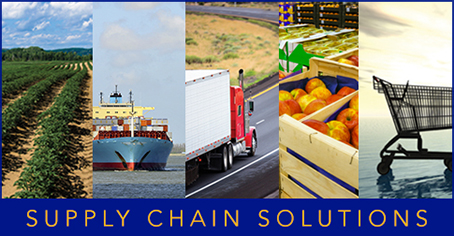“Locally sourced” is as American as baseball, Mom, and apple pie. In the produce supply chain, it suggests immediate postharvest availability, maximum freshness, and local distribution. These perceptions drive greater consumer demand which, in turn, creates a strong incentive for distributors, retailers, and foodservice companies to source and sell local produce.
Greater proximity to growers typically creates supply chain speed, simplicity, and cost efficiency. However, the complexities of the fresh produce industry make local sourcing difficult. Discussions with executives from a national foodservice company and a regional produce distributor provide insights into the opportunities and challenges of taking on ‘local’ suppliers.
Profitable Growth
Properly implemented, local sourcing can have a positive impact on a supplier’s income statement. Top-line revenue growth can be achieved by serving the expanding ranks of locavores. Operating costs can be reduced by optimizing supply chain processes.
The demand-driven opportunity for produce growers and suppliers is clear as the value of local food sales continues to grow. Industry data indicates that local food sales totaled at least $12 billion in 2014 and projections have the market hitting $20 billion in value by 2019.
“Every year, we have the conversation about how do we get more local,” notes Greg Cessna, CEO of Consumer Fresh Produce Inc. in Pittsburgh, PA. “From a purely marketing standpoint, it’s the real deal and we’re getting more pressure for local and organic produce. We see it in our foodservice customer demand.”
Not only is demand rising, but multiple studies indicate consumers actively seek out stores and restaurants that serve locally sourced products. And, one-third of consumers are willing to pay a premium of 10 percent for local foods, according to a 2014 study by global management consulting firm A.T. Kearney in Chicago. Driving this consumer participation are perceptions that local produce is fresher, tastes better, promotes sustainability, and supports the local economy.
Proximity
Often, the pursuit of sales growth can be an expensive proposition involving wider source and market areas. Proximity to both suppliers and customers vastly improves with local produce, leading to potential supply chain cost efficiencies and greater product availability. This further encourages local sourcing initiatives.
“Our customers are asking for products sourced locally and regionally,” confirms Denis Jennisch, senior director of sourcing and merchandising for produce at US Foods. “Another driving force is with climate change and growing conditions around the country, it’s getting harder to supply our needs based out of one location or a couple locations.”
Transportation represents the biggest cost reduction opportunity; it is the single largest supply chain expense. Shifting from international and West Coast sources to nearby suppliers can result in a major reduction of a product’s landed cost. Shorter delivery distances conserve natural resources and reduce emissions, while less transit time can boost product shelf life.
“If we could source more locally, rather than the West Coast or Southeast, we would love it,” comments Cessna. “Our transportation costs would be less on a per-package basis.”
Jennisch indicates that the cost of trucking fresh produce gets greater every year. When transportation accounts for the bulk of a product’s cost, reducing distance can be a real money saver.
Inventory
Inventory benefits also accrue from shorter supply chains. Lower inventory carrying costs are achieved as there is less in-transit product and a reduced need for safety stock to protect against delays. Product quality is protected with fewer transfers and lower risk of temperature fluctuations. Ultimately, inventory write-offs due to product damage and spoilage should decline; collectively, these inventory benefits flow to the bottom line.
Supply chain planning and forecasting can also work better at the local level. Planning effectiveness increases when meeting with nearby growers, which adds the ability to monitor field or greenhouse conditions, and maintain supply visibility. Forecast accuracy is enhanced by local market knowledge and demand insights, promoting demand responsiveness and on-shelf availability.
The ability to meet suppliers, face to face, can be advantageous. “When we get into tight markets, oftentimes your relationships determine whether you get prorated or get product at all,” Cessna notes. So visiting growers and building direct relationships can promote better alignment between supply chain partners.
Practical Considerations
Given the financial opportunity, tapping into the local food scene seems like a logical pursuit for fresh produce suppliers. Before directly jumping in, experts recommend making time for a rational evaluation of the basic issues to determine the feasibility of local sourcing.
First, getting started in the local food movement requires answering a fundamental question: “How do you define local?” Unfortunately, there is no universal definition. Consumers commonly think of a 100-mile radius for a local farm-to-fork supply chain. Retailers and suppliers may consider local as a wider region. Those turning to the 2008 Farm Act will find it allows produce to be marketed as local or regional within 400 miles of the farm, or within state boundaries. Suppliers need to be careful to not overextend the local concept, lest they be ostracized by the locavore community.
Second, the ability to serve local demand may be limited by geography and seasonality. Where local production is possible, the growing season may be much shorter than desired. Efforts are being made to overcome these limitations. The U.S. Department of Agriculture (USDA) has helped growers construct over 15,000 high tunnels in some regions to extend the growing season. These low-cost shelters can make locally-grown produce available for a greater proportion of the year.
Jennisch notes that products like squash, tomatoes, peppers, and cucumbers are grown in multiple regions. They are logical candidates for local sourcing. In contrast, some California-grown products have a greater yield and better taste profile than locally sourced product.
Finally, capacity can be a limiting factor. Local producers may not have the fields and equipment needed to consistently support the volume requirements of larger distributors, foodservice companies, and retailers. Without local product available to fulfill demand, these companies have no choice but to source elsewhere.
Cessna agrees many smaller growers “don’t have the volume we’re looking for. They might have two pallets when we’re looking for ten or twenty. And, they tend to not have consistency across product size and quality.”
Persistent Challenges
Assuming the practical considerations can be addressed, distributors and foodservice companies must work closely with local suppliers to ensure both a stable supply chain and steady product flow. They must collectively tackle the issues of food safety compliance, product quality, supply chain complexity, and cost inefficiency.
Food Safety & Quality
Food safety, of course, is crucial in the fresh produce industry. Although there are many exceptions in the Food Safety Modernization Act for small farms, they are not truly exempt from compliance.
From a practical standpoint, local growers must meet the food safety standards, traceability requirements, and production practices required by the most demanding company in their supply chain. Distributors and foodservice companies must protect their customers from any type of contamination risk and demand local growers be as capable as larger suppliers. The demand for local is not so great that suppliers are willing to put their reputations or financial stability in jeopardy to work with unproven growers.
Meeting the quality standards of downstream customers is another make-or-break issue for local growers. Product must meet the appearance, size, and taste profiles required by retailers and restaurants. Otherwise, distributors and foodservice companies will reject the product and source it elsewhere. The grower is then forced to pursue an alternate selling channel that may be less lucrative.
“We need to make sure that what we source meets customer expectations from a spec and taste profile,” mentions Jennisch. “We will continue to look for these as we source products locally and regionally. As long as they’re growing great product with great taste profiles and meeting all the top requirements, I think local growers have opportunities for long-term relationships.”
Maintaining Control
Local supply chains can suffer from persistent complexity. While this may seem counterintuitive, problems can arise when national restaurants and retailers pursue local sourcing strategies. The buying decisions, quality control testing, and standards enforcement often become decentralized and multiple supply chains emerge.
If these components operate independently without strong centralized control, variation may creep into the sourcing process. Harvard University’s John Quelch believes that this sourcing fragmentation contributes to food safety incidents like those experienced by Chipotle Mexican Grill’s restaurants in 2015.
The antidote to these problems is to establish strong supply chain capabilities that comply with USDA good agricultural practices and good handling practices. If these capabilities cannot be established in-house, the grower must establish relationships with quality pack houses or with the growing number of local food hubs.
“We try to work with consolidators and hubs that handle multiple growers and products to achieve efficient logistics lanes to our markets and customers,” shares Jennisch. He adds that these intermediaries have the capabilities to cool product and label it properly to help small growers with traceability. Other growers follow proper procedures but lack the needed documentation to go through an inspection to become certified. Doing so will create opportunities with larger buyers.
The final local sourcing challenge is the cost of achieving food safety, product quality, and supply chain expertise. Jennisch notes that while some growers lack the size and scale to achieve effi-ciencies and absorb these costs, they should not be immediately disqualified or discarded.
“If you find the right growers that are doing a lot of good things, work with them in the early days to make them competitive in the marketplace,” recommends Jennisch. “As they grow, they’ll achieve economies of scale and their costs will be reduced.”
Wrap Up
Local food is on an upward trajectory and growers, distributors, and foodservice companies have taken notice. Consumers want locally grown produce and are willing to pay a premium for it—but it is not a risk-free proposition and companies should not jump in without advanced preparation.
Local sourcing requires significant time and effort; distributors and foodservice companies need to properly understand the practical implications of working with local growers, adopt a long-range perspective, and help producers conquer persistent challenges. Doing so will greatly increase the likelihood of safely and profitably serving this growing consumer segment.



